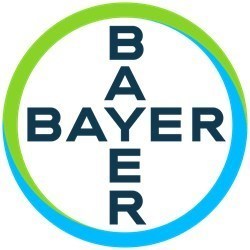WHIPPANY, N.J., April 7, 2016 /PRNewswire/ -- Results from a retrospective claims database study of pulmonary embolism (PE) patients published today in the American Journal of Medicine indicate that U.S. physicians may be under-recognizing and under-diagnosing thousands of cases of a serious lung disease. Chronic thromboembolic pulmonary hypertension (CTEPH), which was the focus of this study, is a potentially surgically curable form of pulmonary hypertension (PH). The study found that nearly half (45 percent) of patients who had a PE had no appropriate follow-up imaging tests performed in the two years following their diagnosis, even though 87 percent of them showed signs and symptoms of PH, such as breathlessness.[1],[2],[3],[4]
CTEPH, is a rare, life-threatening form of PH that involves numerous, persistent blood clots in the lungs.
"Between 300,000 and 600,000 Americans experience a pulmonary embolism every year, and our study shows that up to four percent of those patients may later go on to develop CTEPH," said Victor Tapson, M.D., director of the Venous Thromboembolism and Pulmonary Vascular Disease Research Program at Cedars-Sinai Medical Center in Los Angeles. "Furthermore, the results demonstrate that the risk of developing CTEPH after pulmonary embolism remains substantially under-recognized."
The INFORM (INvestigating the role oF disease monitORing in incident PE patients using a Managed care claims dataset) study, which Bayer sponsored, investigated the incidence of PH diagnoses following acute PE in 7,068 patients in the U.S. The researchers concluded that the two-year cumulative incidence of PH is 7.6 percent, although 50 percent of these patients also had left heart disease diagnosed, suggesting that the incidence of CTEPH could be 3.8 percent.[1]
"These results demonstrate that if respiratory symptoms are nonspecific and persistent in a patient with a history of pulmonary embolism, you have to have a high index of suspicion for pulmonary hypertension," said David Platt, M.D., director, U.S. medical affairs at Bayer, and co-author of the INFORM study. "The implications are particularly important for the subset of pulmonary embolism patients who go on to develop CTEPH. Increased awareness and use of recommended diagnostic methods, such as V/Q scans, could dramatically improve prognosis, given the availability of potentially curative surgery."
People with CTEPH have symptoms similar to those of other more common conditions, such as asthma and chronic obstructive pulmonary disease, as well as other types of PH.[2],[5] However, unlike other types of PH, CTEPH is potentially curable with pulmonary thromboendarterectomy surgery.[6] In part because of the nonspecific symptoms, CTEPH is underdiagnosed and often misdiagnosed as another disease.[2]
About Chronic Thromboembolic Pulmonary Hypertension (CTEPH)
CTEPH is a progressive and life-threatening disease and a type of pulmonary hypertension, in which it is believed that thromboembolic occlusion (organized blood clots) of pulmonary vessels gradually lead to an increased blood pressure in the pulmonary arteries, resulting in an overload of the right heart. CTEPH is a rare disease and is comparable in terms of population size to pulmonary arterial hypertension, though there are fewer diagnoses made so far. CTEPH may evolve after prior episodes of acute pulmonary embolism, but the pathogenesis is not yet completely understood. The standard and potentially curative treatment for CTEPH is pulmonary thromboendarterectomy (PTE), a surgical procedure in which the blood vessels of the lungs are cleared of clot and scar material. However, a considerable number of patients with CTEPH (20%-40%) are not operable and in up to 35 percent of patients, the disease persists or reoccurs after PTE.
Bayer: Science For A Better Life
Bayer is a global enterprise with core competencies in the Life Science fields of health care and agriculture. Its products and services are designed to benefit people and improve their lives. At the same time, the Group aims to create value through innovation, growth and high earning power. Bayer is committed to the principles of sustainable development and to its social and ethical responsibilities as a corporate citizen. In fiscal 2015, the Group employed around 117,000 people and had sales of EUR 46.3 billion. Capital expenditures amounted to EUR 2.6 billion, R&D expenses to EUR 4.3 billion. These figures include those for the high-tech polymers business, which was floated on the stock market as an independent company named Covestro on October 6, 2015. For more information, go to www.bayer.us.
Bayer® and the Bayer Cross® are registered trademarks of Bayer.
Forward Looking Statement
This news release may contain forward-looking statements based on current assumptions and forecasts made by Bayer Group or subgroup management. Various known and unknown risks, uncertainties and other factors could lead to material differences between the actual future results, financial situation, development or performance of the company and the estimates given here. These factors include those discussed in Bayer's public reports which are available on the Bayer Web site at www.bayer.com. The company assumes no liability whatsoever to update these forward-looking statements or to conform them to future events or developments.
[1] Tapson, V et al. INFORM (INvestigating the role oF disease monitORing in incident PE patients using a Managed care claims dataset): Current Practices in Disease Monitoring of Pulmonary Embolism in the United States. Am J Med. 2016;03:006
[2] Tapson V et al. Incidence and prevalence of chronic thromboembolic pulmonary hypertension: from acute to chronic pulmonary embolism. Proc Am Thorac Soc. 2006;3:564-7.
[3] Kim et al. J Am Coll Cardiol 2013; 62: D92-9
[4] Pengo V, et al. Incidence of Chronic Thromboembolic Pulmonary Hypertension after Pulmonary Embolism. N Engl J Med. 2004;350:2257-2264.
[5] Piazza G and Goldhaber SZ. Chronic thromboembolic pulmonary hypertension. N Engl J Med. 2011;364:351-360.
[6] Simonneau G, et al. J Am Coll Cardiol. 2009;54(suppl 1):S43-S54.
Intended for U.S. Media Only
Logo - http://photos.prnewswire.com/prnh/20140312/NY79226LOGO
SOURCE Bayer
Related Links
WANT YOUR COMPANY'S NEWS FEATURED ON PRNEWSWIRE.COM?
Newsrooms &
Influencers
Digital Media
Outlets
Journalists
Opted In




Share this article